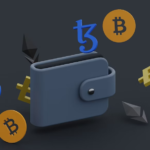In an era where the world of money feels more complex than ever, Millennials and Gen Z face unique financial challenges: rising living costs, student debt, unpredictable job markets, and the imperative to build long-term security. Thankfully, a new generation of mobile financial-planning apps offers tools tailored to their needs. In this article, we explore key apps, the criteria for choosing them, and how younger adults can use them strategically to build stronger financial futures.
Why this generation needs smarter tools
Millennials (born roughly 1981–1996) and Gen Z (born roughly 1997–2012) are digital natives, accustomed to doing almost everything via smartphone. When it comes to money, this digital comfort means they’re more likely to adopt mobile finance tools—but also face new risks. For example, younger people rely heavily on peer-to-peer payments, social-media-influenced financial advice, and fintech apps rather than traditional advisors.
Moreover, foundational habits like budgeting, saving for emergencies, and investing early are still less prevalent among younger groups—making good app choices even more important. Financial planners now emphasise that these tools must do more than track spending; they must empower habits and build resilience.
What to look for in a financial planning app
Before diving into specific apps, it’s useful to clarify what features matter most. For Millennials and Gen Z, good financial-planning apps should deliver:
Practical budgeting and spending tracking
- Automated syncing with bank accounts and cards so the user sees where money goes.
- Clear categories and alerts when budgets are exceeded.
Goal-oriented savings and investing
- Support for setting savings goals (vacation, emergency fund, down payment).
- Micro-investing or low-cost investing options for beginners.
Behavioural nudges and insights
- Friendly interfaces that translate complex financial concepts into understandable steps.
- Reminders, gamified progress, or visual dashboards to maintain engagement.
Accessibility and affordability
- Mobile-first design, minimal fees or transparent pricing.
- Suitable for someone at an early career stage.
Security and trust
- Strong encryption, reputable backing, and transparent policies.
- While many apps are global, confirming availability in a user’s region is crucial.
Armed with these criteria, the next section highlights five standout apps.
Top apps worth considering
1. You Need a Budget (YNAB)
YNAB is a budgeting app built on four simple rules: give every dollar a job, embrace true expenses, roll with the punches, and age your money.
Why Millennials & Gen Z might like it:
- It shifts the emphasis from “tracking what you already spent” to “actively choosing what each dollar does”.
- The app fosters discipline and awareness—valuable for younger adults who may be building savings from modest levels.
- It is slightly more disciplined than typical “set-and-forget” apps, so ideal for someone ready to engage deeply.
Potential drawback:
- It requires more time and commitment. Some users may prefer something more passive if they’re just getting started.
2. Mint
A long-standing player, Mint offers automated account aggregation, budgeting tools, and alerts. It’s often cited as a go-to for young adults.
Strengths:
- Easy setup and automatic syncing with many institutions.
- Good for getting a quick overview of finances and spotting where overspending occurs.
- Minimal learning curve.
Considerations:
- While great for awareness, if your goal is aggressive savings or investing, you may need to layer other apps on top.
3. Acorns
Acorns uses automatic “round-up” savings and invests spare change into diversified portfolios—an appealing feature for younger users who may not have large sums to invest yet.
Why it fits:
- It builds the investing habit with minimal friction.
- It’s ideal for Gen Z or Millennials who feel “not ready” to invest but want to start.
- Low entry barrier makes it psychologically easier.
Caveats:
- The returns from tiny round-ups will be modest—investing is a long game.
- You should still understand fees, portfolio holdings, and risk.
4. Qapital
Qapital takes a behavioural-economics approach: you set savings goals, rules (for example: “If I buy coffee, round-up to the next dollar”), and automatically allocate funds.
Why it stands out:
- It taps into behavioural triggers—useful if you want the app to “nudge” you rather than rely purely on discipline.
- It’s playful and may appeal to younger users who prefer interactive experiences.
Notes:
- You still need to complete the goal-setting step (which many skip).
- Ensure you’re clear on how rules affect your cash flow—automatically diverting funds means less liquidity.
5. Brightfin
A newer entrant built explicitly for younger generations, Brightfin combines account-syncing with a swipe-style interface to monitor spending and savings in a gamified way.
Why it may resonate:
- It’s designed with Millennials and Gen Z in mind: intuitive interface, mobile-first, visually engaging.
- Could be a good fit for someone who resists traditional “finance apps” because they feel too dry.
Important to note:
- As a newer product, it may still be scaling features or geographic coverage.
- Always check regulatory and security credentials.
How to pick the right app for your life stage
Choosing one (or two) apps is more effective than chasing dozens. Here’s how you can decide:
Step 1: Define your primary goal
- If your spending is all over the place and budgeting is a struggle → try Mint or YNAB.
- If you already have basic budgeting and want to build savings/investing habits → consider Acorns or Qapital.
- If you need a fresh-approach, mobile-first experience → explore Brightfin.
Step 2: Try a “trial phase”
Most apps offer a free period or free features. Use an app for 30 days, monitor how often you use it, how clearly you understand insights, and whether it changes behaviour.
Step 3: Layer wisely
You don’t need a single app to do everything. For example: Mint to track, Acorns to invest, and YNAB to plan. But avoid too many apps that require data input—overload causes drop-off.
Step 4: Review monthly
Set one time per month to open your app(s), review your spending/saving/investing, set one adjustment. The apps are tools: the outcome depends on consistent use.
Common pitfalls and how to avoid them
- Passive use: Installing an app and expecting change without engagement won’t work. You still need to act.
- Ignoring fees: Some apps are “free” but may charge hidden fees, or the investing component might cost more.
- Over-investing early: For younger users, building an emergency fund and paying off high-interest debt often comes before aggressive investing.
- Neglecting security/privacy: Young users comfortable with apps may overlook terms of service or data-sharing practices. Always review.
- Expecting overnight results: Financial habits built over years. Apps help tidy the pathway—but the journey is yours.
Why this matters more now than ever
Younger generations face a financial landscape very different from their parents’. High rents, delayed homeownership, variable incomes, and inflation all make financial planning more urgent and complicated. Fintech apps have become a vital channel. A recent overview described how the next generation is choosing fintech brands over traditional banks for wealth-tech solutions.
In other words: leveraging the right tools now isn’t just “nice to have”—it may be the difference between staying reactive and becoming proactive in your financial journey.
Final thoughts
Choosing the right financial-planning app is an important step—but only the first step. The real difference comes from regular use, honest evaluation of your habits, and adjusting your approach as your life evolves. Whether you’re fresh out of college, early in your career, or building toward long-term goals, the apps above offer tailored support for Millennials and Gen Z.
Take the first step today: pick one app, give it a month of consistent use, and in your next review ask yourself: “Did I learn something? Did I act differently?” If the answer is no, experiment with another tool. The most important action is not the tool you choose—it’s that you choose one and stick with it.
If you found this helpful, subscribe for more insights on financial planning, personal finance tools, and smart money habits. Your future self will thank you.










